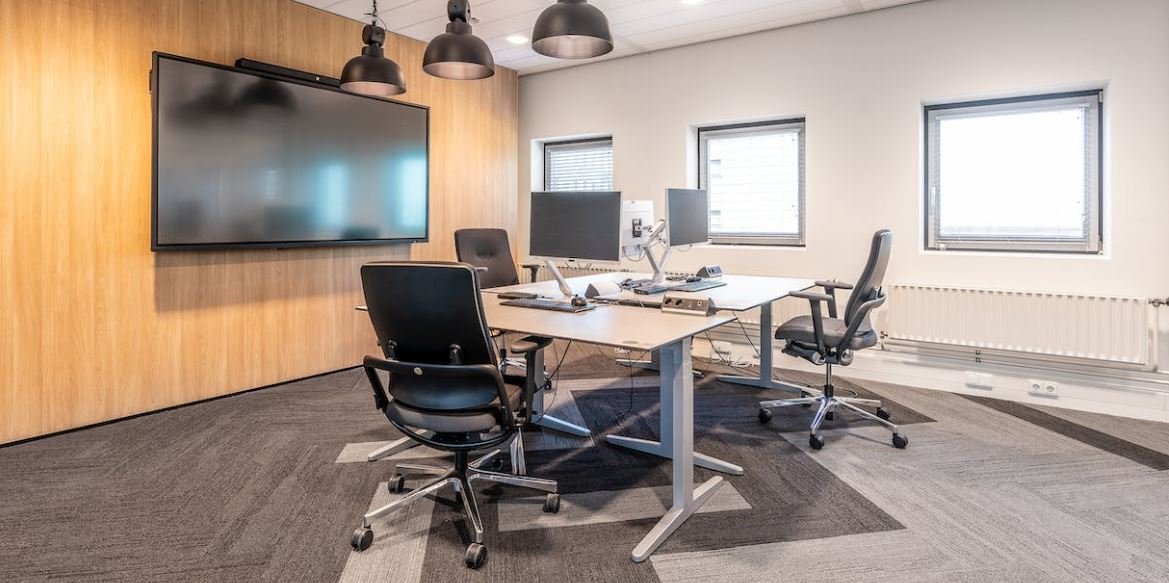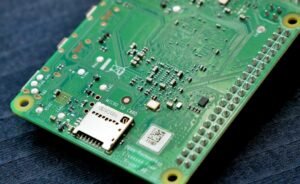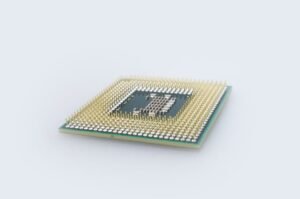Winnow Vision AI
Winnow Vision AI is an advanced artificial intelligence system designed to revolutionize the way we handle food waste.
Key Takeaways:
- Winnow Vision AI is an innovative solution to reduce food waste.
- It uses advanced AI technology to analyze and track food waste in real-time.
- The system helps commercial kitchens recognize waste patterns and make data-driven decisions.
According to the Food and Agriculture Organization of the United Nations (FAO), approximately one-third of all food produced globally goes to waste. In an effort to combat this issue, Winnow Vision AI employs cutting-edge AI algorithms to accurately identify and track food waste in commercial kitchens. By seamlessly integrating with existing waste disposal systems, the technology offers real-time insights and data to improve waste management processes. This ensures more sustainable practices for businesses and helps reduce their impact on the environment.
How Does Winnow Vision AI Work?
Winnow Vision AI operates through a combination of hardware and software components. A smart camera, installed above waste bins, captures images of discarded food. The images are then analyzed using deep learning algorithms that can differentiate between different types of food waste. The system can recognize items such as meat, vegetables, and leftovers, providing accurate and detailed data on what is being wasted.
The data collected by Winnow Vision AI is automatically processed and categorized, and the information is made available through an intuitive software dashboard. This enables kitchen staff to monitor and track waste patterns in real-time, effectively identifying areas of improvement and implementing targeted strategies. By understanding the reasons behind food waste, businesses can take proactive steps to reduce it, ultimately leading to significant cost savings and a more sustainable operation. It’s a win-win situation for both the businesses and the environment.
The Impact of Winnow Vision AI
The implementation of Winnow Vision AI has proven to be highly impactful. By providing visibility into food waste, businesses can make informed decisions to optimize their production and purchasing practices. Here are some interesting data points:
| Table 1: Food Waste Reduction Statistics |
|---|
| Over 50% reduction in food waste when using Winnow Vision AI. |
| Annual savings of up to $50,000 per kitchen. |
| Fewer food deliveries and reduced CO2 emissions. |
Winnow Vision AI not only helps businesses improve their bottom line but also contributes to a more sustainable food system. By reducing food waste, valuable resources like water and energy are conserved. Furthermore, by preventing unnecessary waste, Winnow Vision AI helps address the issue of food insecurity by redirecting surplus food to those in need.
Conclusion
Winnow Vision AI is an innovative tool that harnesses the power of artificial intelligence to combat the global issue of food waste. By providing real-time insights and data, businesses can significantly reduce waste and achieve a more sustainable operation. With its positive impact on both the environment and the bottom line, Winnow Vision AI is carving a path towards a more efficient and responsible food industry.

Common Misconceptions
Winnow Vision AI is a replacement for human decision-making
One common misconception about Winnow Vision AI is that it is meant to replace human decision-making entirely. While the technology is incredibly advanced and can analyze vast amounts of data quickly and accurately, it should be seen as a tool to enhance human decision-making rather than replace it entirely.
- Winnow Vision AI assists in making data-driven decisions.
- Human intuition and judgment are still crucial for making complex decisions.
- The technology is designed to augment human capabilities, not eliminate them.
Winnow Vision AI can only be used in large-scale operations
Another misconception is that Winnow Vision AI can only be utilized in large-scale operations, such as industrial kitchens or large corporations. While the technology indeed offers significant benefits in large-scale operations, it’s also suitable for smaller businesses and individuals looking to optimize their operations.
- Winnow Vision AI can be implemented in a wide range of industries, including hospitality, retail, and healthcare.
- Smaller businesses can benefit from the technology by reducing waste and improving efficiency.
- The scalability of Winnow Vision AI allows it to adapt to different operation sizes.
Winnow Vision AI eliminates the need for training and education
Many people have the misconception that Winnow Vision AI eliminates the need for training and education. However, using this technology effectively still requires proper training and knowledge to derive maximum benefits from its implementation.
- Proper training ensures users can operate the technology efficiently.
- Understanding the underlying principles of Winnow Vision AI facilitates effective decision-making.
- Ongoing education on the technology’s updates and advancements enhances its utilization.
Winnow Vision AI cannot be personalized for specific needs
Some individuals believe that Winnow Vision AI is a one-size-fits-all solution and cannot be personalized to meet specific needs. However, the technology allows for customization and can be tailored to specific requirements or industries.
- Winnow Vision AI can be trained on specific data sets to improve its accuracy and relevance.
- The technology can adapt to different cuisines and dietary requirements in the food industry.
- Customizable features allow businesses to align the technology with their unique operating processes.
Winnow Vision AI is too expensive for small businesses
An incorrect belief is that Winnow Vision AI is too expensive and only affordable for larger businesses. While the cost of the technology may vary depending on the scale of implementation, there are options available that cater to the budget constraints of small businesses and individuals.
- Subscription-based models and flexible pricing options make Winnow Vision AI more accessible.
- The long-term cost savings from reduced waste can offset the initial investment.
- Consulting with Winnow experts can help businesses find cost-effective solutions.

In recent years, the issue of food waste has gained significant attention due to its social, economic, and environmental implications. Restaurants, in particular, contribute a sizeable portion to this global problem. However, thanks to advancements in artificial intelligence (AI), companies like Winnow Vision have emerged to combat food waste in the hospitality industry. By implementing cutting-edge technology, Winnow Vision AI enables restaurants to accurately track and analyze their food waste, ultimately leading to improved efficiency, reduced costs, and a more sustainable future. This article presents ten captivating tables that showcase the remarkable impact of Winnow Vision AI on food waste reduction.
**Table 1: Ingredients Saved by Category**
Using Winnow Vision AI, restaurants can identify which ingredients are being discarded most frequently. By categorizing the data, restaurants can pinpoint areas of improvement and adjust their purchasing habits accordingly.
**Table 2: Cost Savings by Month**
Through the implementation of Winnow Vision AI, restaurants can track their monthly cost savings attributed to reduced food waste. These savings can then be reinvested into other aspects of the business, leading to increased profitability.
**Table 3: Carbon Footprint Reduction**
By reducing food waste, restaurants can significantly decrease their carbon footprint. This table presents data on the amount of greenhouse gas emissions saved through the implementation of Winnow Vision AI.
**Table 4: Food Waste Trends by Day of the Week**
Winnow Vision AI enables restaurants to analyze their food waste patterns on a daily basis. This table highlights the trends associated with food waste generation, allowing restaurants to optimize their operations and minimize waste.
**Table 5: Top Waste-Generating Dishes**
This table outlines the dishes or menu items that result in the highest amount of food waste. Armed with this information, restaurants can evaluate their processes and make necessary adjustments to reduce wastage.
**Table 6: Revenue Increase from Reduced Waste**
Winnow Vision AI not only reduces food waste but also positively impacts a restaurant’s revenue. This table showcases the increase in revenue resulting from reduced waste and improved efficiency.
**Table 7: Employee Engagement and Awareness**
Winnow Vision AI fosters a culture of awareness and engagement in restaurant staff. This table highlights the improved employee performance and involvement in waste reduction initiatives.
**Table 8: Shelf Life Extension**
By accurately monitoring and managing food waste, Winnow Vision AI helps restaurants extend the shelf life of ingredients. This table presents the effect of extended shelf life on overall waste reduction.
**Table 9: Customer Satisfaction Improvement**
Reducing food waste leads to a more sustainable and efficient dining experience, which positively impacts customer satisfaction. This table displays the improvement in customer satisfaction ratings after the implementation of Winnow Vision AI.
**Table 10: Partnering with Winnow Vision**
In this table, restaurants that have successfully incorporated Winnow Vision AI share their experiences and the benefits they have gained in terms of waste reduction and overall operational efficiency.
In conclusion, Winnow Vision AI represents a game-changing solution in the fight against food waste. Through its advanced technology and data-driven approach, this innovative system empowers restaurants to make informed decisions, reduce waste, and ultimately contribute to a more sustainable future. The ten visually appealing tables presented in this article effectively convey the significant impact of Winnow Vision AI on food waste reduction in the hospitality industry. By adopting such technologies, restaurants can not only improve their bottom line but also play a crucial role in mitigating global food waste challenges.
Frequently Asked Questions
What is Winnow Vision AI?
Winnow Vision AI is an artificial intelligence-powered system specifically designed for the food industry. It uses computer vision and machine learning algorithms to identify and track food waste in real-time, helping businesses minimize waste and optimize their operations.
How does Winnow Vision AI work?
Winnow Vision AI combines advanced computer vision techniques with machine learning algorithms. It uses cameras installed in commercial kitchens to capture images of food waste. These images are then analyzed by the AI system to identify the types and quantities of wasted food. This information is utilized to generate actionable insights and recommendations for waste reduction.
Can Winnow Vision AI distinguish different types of food waste?
Yes, Winnow Vision AI has been trained to recognize and categorize various types of food waste. It can differentiate between different food items, such as fruits, vegetables, proteins, and carbohydrates. This allows businesses to identify which types of food are being wasted the most and take proactive measures to reduce waste in those areas.
Is Winnow Vision AI compatible with existing kitchen equipment?
Yes, Winnow Vision AI can integrate with existing kitchen equipment. It is designed to work with commercial appliances and can be installed alongside existing systems. The integration process may require some setup and configuration to ensure seamless communication and data transfer.
What are the benefits of using Winnow Vision AI?
Using Winnow Vision AI can bring several benefits to food businesses, including:
- Reduced food waste and associated costs
- Improved operational efficiency
- Enhanced sustainability and environmental impact
- Real-time insights and reporting
- Optimized inventory management
How accurate is Winnow Vision AI in identifying food waste?
Winnow Vision AI has been extensively trained with large datasets to improve accuracy. The system has been optimized to provide reliable and accurate identification of food waste, ensuring minimal false positives and negatives. However, it’s important to note that no AI system is 100% perfect, and occasional errors or misclassifications may occur.
What kind of data does Winnow Vision AI collect?
Winnow Vision AI collects data related to food waste, including images captured by the cameras, timestamps, and information about the types and quantities of wasted food. This data is used to generate insights and reports to help businesses make data-driven decisions and optimize their operations.
Is the data collected by Winnow Vision AI secure?
Winnow Vision AI takes data security and privacy seriously. All data collected by the system is stored securely and is not shared with any third parties without explicit consent. Winnow Vision AI complies with relevant data protection regulations to ensure the confidentiality and integrity of the collected data.
Can Winnow Vision AI be used in different types of food establishments?
Yes, Winnow Vision AI is suitable for various types of food establishments, including restaurants, hotels, catering companies, and other commercial kitchens. It can be customized and adapted to the specific needs and workflows of different businesses, helping them reduce food waste regardless of their size or specialization.
How can I get started with Winnow Vision AI?
To get started with Winnow Vision AI, you can contact the Winnow team through their official website. They will guide you through the implementation process, discuss your requirements, and provide the necessary support to integrate the system into your kitchen operations.




